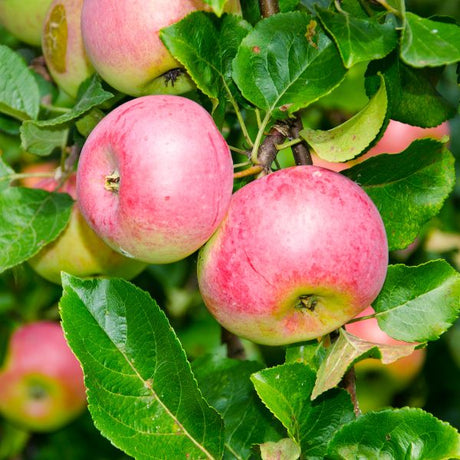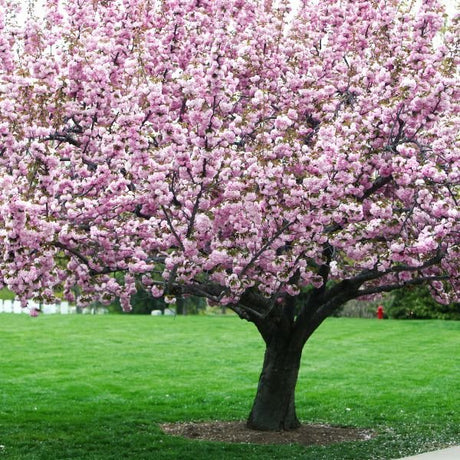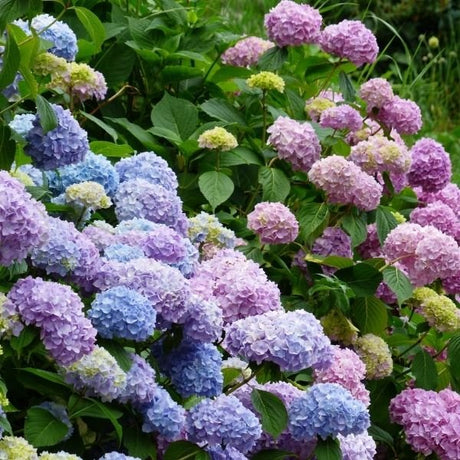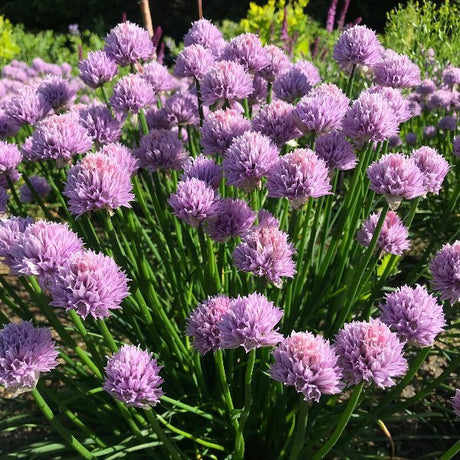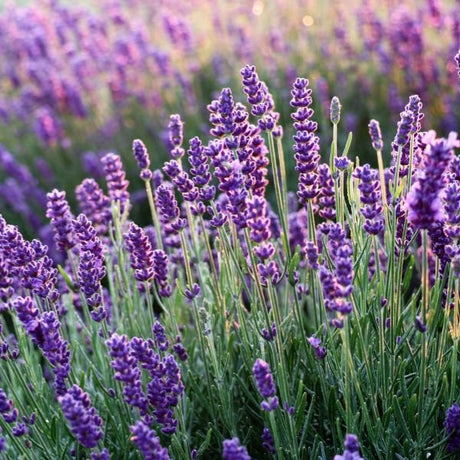Chinese Chestnut Tree
Castanea mollissima
- Stay Protected with Plant Sentry ™
Chinese Chestnut Tree - #3 Container 3-4 Feet is backordered and will ship as soon as it is back in stock.
Plant Sentry™
Plant Sentry™

Plant Sentry™ Protected
Your order is protected by our compliance system that:
- Prevents restricted plants from shipping to your state
- Ensures plants meet your state's agricultural requirements
- Protects gardens from invasive pests and diseases
Delivery and Shipping
Delivery and Shipping
Delivery and Shipping
Fast, Safe Plant Delivery
Ships in 3-4 business days • Tracking provided • Weather protected
| Under $50 | $9.99 |
| $50 - $99.99 | $14.99 |
| $100 - $149.99 | $16.99 |
| $150+ | $24.99 |
✓ Zone-specific timing • ✓ Professional packaging • ✓ Health guarantee
Understanding Plant Options
Nature Hills offers plants in two main formats:
- Container Plants: Grown in pots with soil, sized by container volume and plant age
- Bare Root Plants: Dormant plants without soil, sized by height measurements
Container Plant Sizes
Container sizes indicate plant age and growing capacity rather than liquid volume equivalents. Our containers follow industry-standard nursery "trade gallon" specifications, which differ from standard liquid gallon measurements.
Young Plants (6 months to 18 months old)
| Container Size | Actual Volume | Metric Equivalent |
|---|---|---|
| 2" x 2" x 3" | 0.18 - 0.21 dry quarts | 0.20 - 0.23 dry liters |
| 4" Container | 0.31 - 0.87 dry quarts | 0.35 - 0.96 dry liters |
| 4.5" Container | 0.65 dry quarts | 0.72 dry liters |
| 6" Container | 1.4 dry quarts | 1.59 dry liters |
| 1 Quart | 1 dry quart | 1.1 dry liters |
| 5.5" Container | 1.89 dry quarts | 2.08 dry liters |
Established Plants (18 months to 2.5 years old)
| Container Size | Actual Volume | Metric Equivalent |
|---|---|---|
| 2 Quart | 2 dry quarts | 2.2 dry liters |
| #1 Container | 2.26 - 3.73 dry quarts | 2.49 - 4.11 dry liters |
| 5" x 5" x 12" | 3.5 - 4.3 dry quarts | 3.85 - 4.74 dry liters |
Mature Plants (2-4 years old)
| Container Size | Actual Volume | Metric Equivalent |
|---|---|---|
| #2 Container | 1.19 - 1.76 dry gallons | 5.24 - 7.75 dry liters |
| #3 Container | 2.15 - 2.76 dry gallons | 8.14 - 12.16 dry liters |
Large Plants (3-5 years old)
| Container Size | Actual Volume | Metric Equivalent |
|---|---|---|
| #5 Container | 2.92 - 4.62 dry gallons | 12.86 - 20.35 dry liters |
| #6 Container | 5.25 - 6.01 dry gallons | 23.12 - 26.42 dry liters |
| #7 Container | 5.98 - 6.53 dry gallons | 26.34 - 28.76 dry liters |
Bare Root Plants
Bare root plants are sold by height from the root system to the top of the plant. Plants may exceed minimum height requirements.
Common Sizes:
- Trees: 1 foot, 2 feet, 3 feet, 4 feet, 5 feet, 6 feet
- Shrubs & Perennials: 1 foot, 18 inches, 2 feet
Important Notes
Container Volume Specifications
- Trade Gallon Standard: Our containers follow industry-standard "trade gallon" specifications established by the American National Standards Institute (ANSI Z60.1) for nursery stock
- Volume Variations: Actual soil volume may vary due to plant root systems and growing medium settlement
- Age Indicators: Container size primarily indicates plant age and maturity rather than liquid volume equivalents
Growing Conditions
- Plant size can vary based on variety and growing conditions
- Container size helps indicate plant maturity and establishment level
- Larger containers generally mean more established root systems and faster landscape establishment
Seasonal Availability
- Bare root plants are available seasonally when dormant
- Container plants are available throughout the growing season
- Specific varieties may have limited availability in certain sizes
Questions?
For questions about specific plant sizes or availability, please contact our plant experts who can help you choose the right size for your landscape needs.
Plant Highlights
Chinese Chestnut Tree highlights at a glance!
-
Brand
-
Botanical Name
-
Mature Height
-
Mature Spread
-
Sun ExposureFull Sun
-
Moisture
-
Soil
-
Growth RateMedium
-
Fall Color
-
Pollinator Required
-
Pruning Time
-
Bloom PeriodSummer
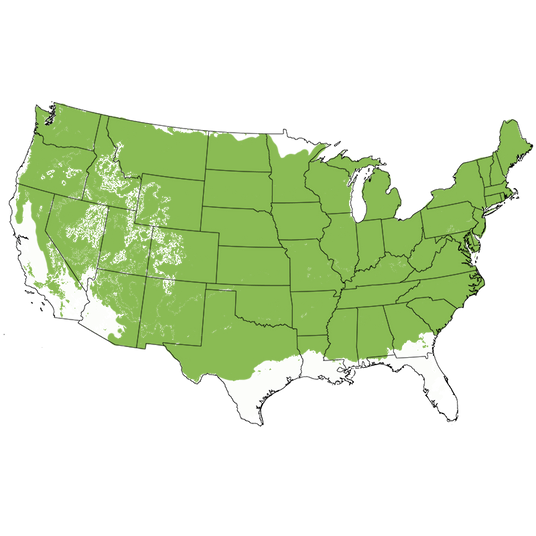
Growing Zones
Productive & Beautiful Chinese Chestnut Tree
This beautiful tree offers something unique in every season. Easy care, hardy, and productive, Chinese Chestnut Tree (Castanea mollissima) is a beautiful choice for your home garden, farm, or orchard. It's also a great choice to include in a permanent wildlife food plot because of the large crop of incredible nuts.
They produce a bumper crop of delicious edible nuts that are valuable as a cash crop. Sell them to local restaurants, or to harvest for yourself. Imagine your family and friends gathered to roast your own harvested chestnuts on an open fire, or in the oven! What a special treat.
Chinese Chestnut trees are easy to care for lawn trees. They develop into a magnificent, large specimen with a massive trunk and a wide-spreading, densely rounded crown.
In spring, long, creamy white flowers add a ton of interest. The highly textured, glossy green leaves are very attractive. They cast deep, dense shade in the summer.
In the fall, neighbors will slow down to check out the shining yellow and gold leaves. This is a deciduous tree, so it loses the leaves in the winter but makes up for it with a striking bare silhouette.
The Chinese Chestnut Tree is a wonderful large shade tree that is often planted alone for the beauty and shade it provides. The primary difference between the beloved American Chestnut and the Chinese Chestnut is the Chinese have a more spreading canopy.
Order one or more today! It does require another Chinese Chestnut cultivar to pollinate for nut production, so consider ordering at least 3 to get the largest crops.
How to Use Chinese Chestnuts
The Chinese Chestnut develops 2 to 3 nuts per bur and the flavor is similar to the American and Spanish sweet chestnuts. When the burs are ripe in early fall, they tumble to the ground and split open, revealing the wonderful fruit inside. Harvest them for your use right away or allow local deer to happily eat them for you.
Because they bloom late - well past the danger of frost - they'll reliably produce year after year. Best production is found in areas with a long growing season and mild winter. Plant several Chinese Chestnut trees to ensure pollination for a bountiful harvest.
On average, 15-year-old trees will provide 150 pounds of nuts. They'll ripen in fall and provide a windfall for your family. Give them time to get established in your yard, or in permanent wildlife feed lots.
Chinese Chestnuts are sweet, and grow between a quarter size, up to a 50-cent piece or even larger. These are BIG nuts, that pack a lot of nutrition inside. They have a silky texture and give a buttery, toasty flavor to many dishes.
With plenty of Vitamins C and B, folic acid, and minerals like magnesium and potassium, these nuts are nutritious powerhouses. Cut an X into the bottom of the bur, then roast or boil them. You can easily peel them while they are warm.
Perfect in savory meat or meatless recipes, you can also mill them into flour for polenta or Italian castagnaccio pancakes and cakes. Sweet and full-flavored, the pale, golden-yellow nut makes a great selection for roasting or boiling for holiday treats or to include in salads, stuffing, or soups. Even the processed Chinese Chestnut flowers make fabulous pancakes!
- Big Glossy Green Leaves
- High Yield of Delicious Edible Nuts
- Brilliant Fall Color
- Wildlife Tree & Large Crop Of Nuts
- Great Shade Tree
#ProPlantTips for Care
Chinese Chestnut trees are easy to care for lawn trees. They love well-drained, moist, loamy soils, but also do well in drier soils in more arid climates. Chinese Chestnut is a recommended replacement for the American Chestnut.
The tree performs poorly in alkaline soils with high pH levels. Collect rainwater in rain barrels to water if your municipal water is too alkaline with a high pH.
Because they are sun lovers, they won't like being in the shade of other trees. Choose a site in full sun that offers them a little room of their own.
Once established, they will tolerate periods of drought. Providing them plenty of water through the growing season, though, promotes good tree growth and adds to regular nut production.
For groves, plant them 40 feet on center (measuring from trunk to trunk.) Apply organic all-purpose fertilizer in spring.
Give protection against deer and fence it while young. From day one, apply Deer Repellent spray according to the directions. Harvest the nuts regularly in the fall and don't leave behind any nuts to draw deer into your yard in the first place.
- Full Sun
- Moderate Moisture Needs
- Well-Drained Soil Locations
- Easy To Grow
- Blight Resistant
You'll be thrilled with this beautiful and productive tree, order the edible Chinese Chestnut today at NatureHills.com!







